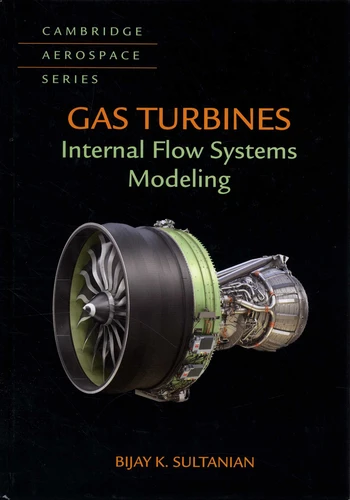Gas Turbines. Internal Flow Systems Modeling
Par :Formats :
- Réservation en ligne avec paiement en magasin :
- Indisponible pour réserver et payer en magasin
- Nombre de pages366
- PrésentationRelié
- FormatGrand Format
- Poids0.925 kg
- Dimensions18,5 cm × 26,0 cm × 2,1 cm
- ISBN978-1-107-17009-4
- EAN9781107170094
- Date de parution01/10/2018
- CollectionCambridge Aerospace Series
- ÉditeurCambridge University Press
Résumé
This long-awaited, physics-first, design- oriented text describes and explains the underlying flow and heat transfer theory of secondary air systems. An applications-oriented focus throughout the book provides the reader with robust solution techniques, state-of-the-art three-dimensional computational fluid dynamics (CFD) methodologies, and examples of compressible flow network modeling. It clearly explains elusive concepts of windage, nonisentropic generalized vortex, Ekman boundary layer, rotor disk pumping, and centrifugally driven buoyant convection associated with gas turbine secondary flow systems featuring rotation.
The book employs physics-based, design-oriented methodology to compute windage and swirl distributions in a complex rotor cavity formed by surfaces with arbitrary rotation, counterrotation, and no rotation. This text will be a valuable tool for aircraft engine and industrial gas turbine design, engineers as well as graduate students enrolled in advanced special topics courses.
The book employs physics-based, design-oriented methodology to compute windage and swirl distributions in a complex rotor cavity formed by surfaces with arbitrary rotation, counterrotation, and no rotation. This text will be a valuable tool for aircraft engine and industrial gas turbine design, engineers as well as graduate students enrolled in advanced special topics courses.
This long-awaited, physics-first, design- oriented text describes and explains the underlying flow and heat transfer theory of secondary air systems. An applications-oriented focus throughout the book provides the reader with robust solution techniques, state-of-the-art three-dimensional computational fluid dynamics (CFD) methodologies, and examples of compressible flow network modeling. It clearly explains elusive concepts of windage, nonisentropic generalized vortex, Ekman boundary layer, rotor disk pumping, and centrifugally driven buoyant convection associated with gas turbine secondary flow systems featuring rotation.
The book employs physics-based, design-oriented methodology to compute windage and swirl distributions in a complex rotor cavity formed by surfaces with arbitrary rotation, counterrotation, and no rotation. This text will be a valuable tool for aircraft engine and industrial gas turbine design, engineers as well as graduate students enrolled in advanced special topics courses.
The book employs physics-based, design-oriented methodology to compute windage and swirl distributions in a complex rotor cavity formed by surfaces with arbitrary rotation, counterrotation, and no rotation. This text will be a valuable tool for aircraft engine and industrial gas turbine design, engineers as well as graduate students enrolled in advanced special topics courses.


